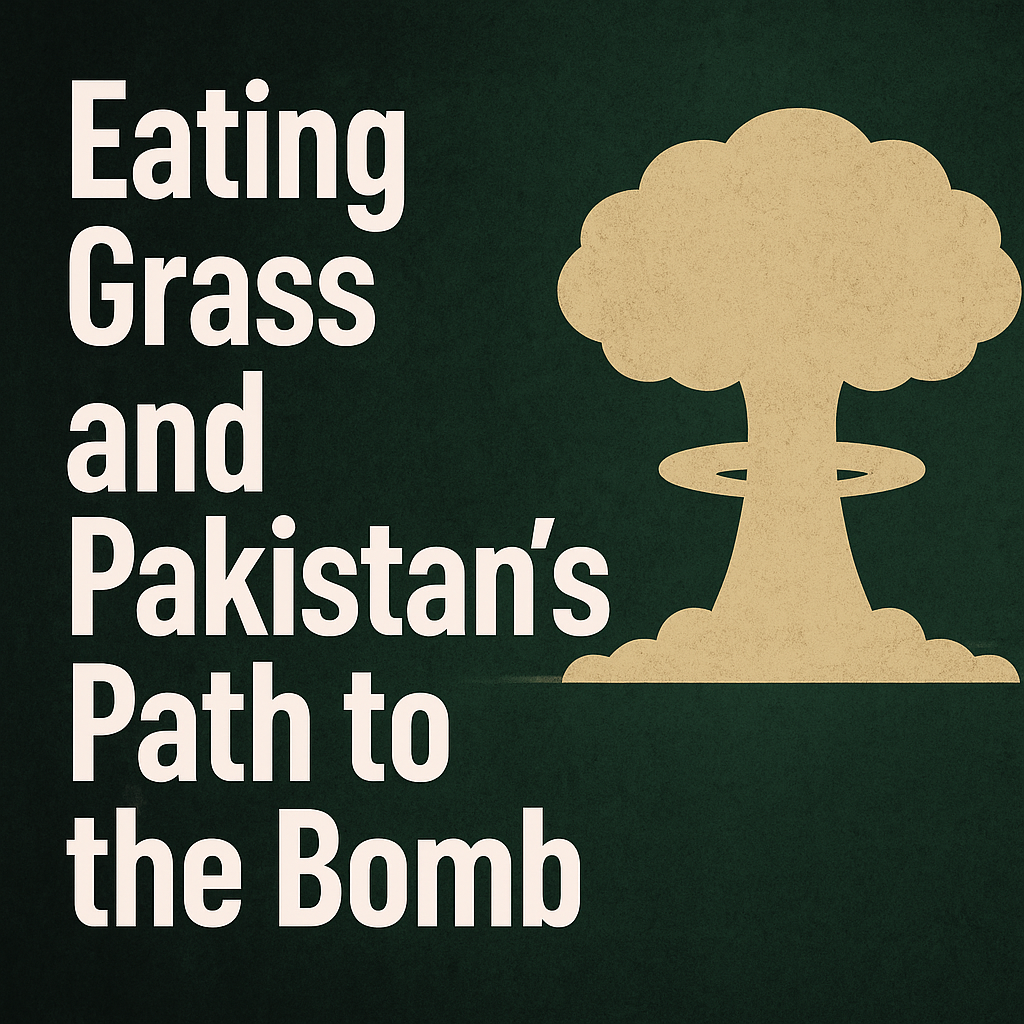How Pakistan Built the Bomb: A Story of Resolve, Sacrifice, and Survival
Explore how Pakistan quietly built its nuclear weapons program against global resistance. Learn how political pressure, military ambition, and national pride helped shape South Asia’s nuclear future.
Introduction
Few countries have faced the kind of security challenges Pakistan did after the 1971 war. Surrounded by regional threats and politically isolated, Pakistan made a choice that would define its future: to develop a nuclear deterrent at any cost. This is the story of how a poor, developing nation secretly built one of the most powerful arsenals in the world—despite sanctions, technology bans, and massive international opposition.
The Turning Point: 1971 and the Loss of East Pakistan
The fall of Dhaka in 1971 was not just a military loss—it was a psychological shock for Pakistan. The country lost half its population, suffered deep national humiliation, and saw the limits of its conventional military power. In that moment of crisis, Pakistan’s leadership realized that survival in a hostile neighborhood would require more than soldiers and tanks.
With India already far ahead economically and militarily, and its nuclear ambitions becoming public, Pakistan feared being cornered. In early 1972, a high-level meeting was held to launch the country’s nuclear weapons program. The decision was made quietly, but its impact would echo for decades.
A Vow to Never Be Vulnerable Again
The leadership vowed to develop a nuclear deterrent—whatever it took. The phrase “we will eat grass but build the bomb” captured the national mood. Resources were limited, but the motivation was powerful: never again should Pakistan be forced to surrender or be humiliated in war.
This was the beginning of a decades-long scientific, military, and political mission. Unlike large nations with open programs, Pakistan’s nuclear development had to be done in total secrecy, away from the eyes of the world and even many of its own citizens.
Building in the Shadows: Science, Secrecy, and Sacrifice
Throughout the 1970s and 1980s, Pakistan quietly worked on uranium enrichment and warhead design. Scientists worked in labs with limited tools and aging equipment. Engineers had to smuggle or re-engineer parts that Western nations refused to sell. Intelligence agencies built covert networks to acquire critical components from overseas.
Despite multiple leadership changes—from Zulfikar Ali Bhutto to General Zia-ul-Haq, and later to elected governments—the nuclear effort never slowed. It became a national mission, passed from one administration to the next like sacred trust.
Ordinary Pakistanis often didn’t know about the program, but behind closed doors, labs and facilities were operating around the clock. Scientists lived under strict control and high pressure, often cut off from their families for long periods.
Facing the World: The 1998 Nuclear Tests
In May 1998, India tested its nuclear weapons in a show of strength. The pressure on Pakistan to respond was overwhelming. Politicians, military officials, and the public demanded action.
Less than three weeks later, Pakistan carried out five underground nuclear tests in the mountains of Chagai, Balochistan. The explosions turned the hills white and announced to the world: Pakistan was now a nuclear power.
These tests changed everything. They confirmed Pakistan’s place in the global strategic landscape and cemented its deterrence strategy. The world reacted with sanctions and criticism, but inside Pakistan, it was a moment of triumph.
Strategic Balance in South Asia
Since then, nuclear weapons have shaped the military balance between Pakistan and India. Despite multiple border crises and terror incidents, both countries have avoided full-scale war. The presence of nuclear weapons has added a layer of caution to South Asia’s dangerous rivalries.
Pakistan’s doctrine is built on deterrence, not aggression. It has developed delivery systems—missiles, aircraft, and more—to ensure that any attack would result in unacceptable consequences.
The Costs and Responsibilities of the Bomb
Building nuclear weapons didn’t come free. Billions were spent on research, facilities, and maintenance. Sanctions hurt Pakistan’s economy. And the program raised tough questions about civil-military control, transparency, and international trust.
There were also darker chapters, such as unauthorized technology transfers to other countries in the early 2000s. These incidents shook Pakistan’s international credibility but also led to tighter controls and stronger oversight structures.
Legacy and Lessons
Pakistan’s nuclear journey is about more than bombs and missiles. It’s about a nation’s resolve to defend itself in a world that often left it isolated. It’s about scientists and soldiers working in silence, often without recognition. And it’s about political leaders making difficult choices in the name of national survival.
Today, Pakistan continues to modernize and secure its strategic assets, not just as a show of strength, but as a matter of national identity and survival.
Final Thoughts
Pakistan’s path to becoming a nuclear power is a story of grit, sacrifice, and strategic determination. It is a powerful example of how a country with limited resources, under constant threat, managed to achieve one of the most complex scientific and military feats in the modern world.
Understanding this journey is essential for anyone who wants to grasp the security dynamics of South Asia—and the importance of diplomacy, stability, and deterrence in a nuclear-armed region.
Enjoyed this article? For more insights on regional security, geopolitics, and untold historical stories, follow us on RemedyTalks.com.
#PakistanNuclearHistory #ChagaiTests #SouthAsiaSecurity #NuclearDeterrence #StrategicDefense #RemedyTalks
